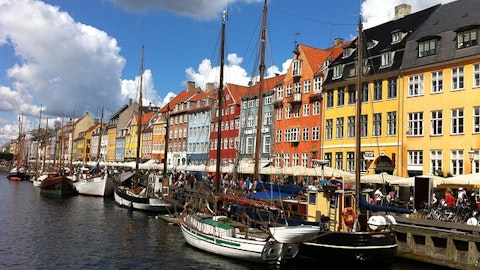Did you ever wonder which are the largest zoos in the world? Thousands of people around the globe go to their local zoo to satisfy their curiosity and witness firsthand some of the amazing creatures that can be found scattered around the world. In addition, they can enjoy attractions and staged events, and acquire first-hand knowledge about the animal kingdom.

Regardless of the personal interest that could motivate your visit to the zoo, the fact is that almost all of us have been to a menagerie a time or two in our lives. Safari parks, aquariums, petting zoos, zoological gardens…there’s a type of zoo for every potential visitor, and today we’ve compiled a list of the largest ones in the world. If you enjoy lists showcasing this type of immensity, you should also check out our countdown on The Ocean’s 10 Biggest Shipping Companies and get blown away by the ten tsunamis of transportation.
Coming back to our present countdown, in ranking the zoos we decided to dismiss the acreage (though we did state it, together with the number of animals housed by each zoo, to show the density of animal population in each establishment). Instead, we considered the number of species and listed the 10 most immense zoos from the ones with the lowest number of species in our top ten, to the ones with the most comprehensive collection of animal species worldwide.
Let’s take a look at the countdown and find out which are the largest zoos in the world, starting with Canada’s entry on the list!
10. The Toronto Zoo
Location: Toronto, Ontario, Canada
Number of Animal Species: 500
Number of Animals: 5,000
Notable Species: Mandarin ducks, orangutans, Sumatran tigers, hyenas, olive baboons, sable antelopes, elks, bison, moose, grizzly bears, lynx, emus, black cockatoos, camels and alpacas.
Opening: 1974
Features: It has one of the most taxonomically diverse collections of animals on display, and the world’s largest indoor gorilla exhibit; it aids in the conservation of endangered species.
Size: 710 acres
A California zoo occupies the next spot on our countdown of the largest zoos in the world, continued on the next page. Can you guess which one?
9. The San Diego Zoo
Location: Balboa Park, San Diego, California, United States of America
Number of Animal Species: 650
Number of Animals: 3,700
Notable Species: Cougars, panda bears, polar bears, gorillas, koalas, wombats, wallabies and Tasmanian devils.
Opening: 1916
Features: Open-air exhibits without caging, gondola lift (Skyfari), tour buses, and natural habitat recreation.
Size: 100 acres
8. The Bronx Zoo
Location: The Bronx, New York City, New York, United States of America
Number of Animal Species: 650
Number of Animals: 6,000
Notable Species: Western lowland gorillas, okapis, otters, gibbons, tapirs, scorpions, Kihansi spray toads and Chinese yellow-headed box turtles.
Opening: 1899
Features: 4D movie theatre, butterfly garden and insect conservatory.
Size: 265 acres
7. The National Zoological Gardens of South Africa
Location: Pretoria, South Africa
Number of Animal Species: 705
Number of Animals: 9,000
Notable Species: Pudús, ruffed lemurs, red pandas, marmosets, Tamarins, emus, owls, kangaroos, Nubian ibexes, cheetahs and Przewalski’s horses.
Opening: 1899
Features: The Apies River separates two different areas of the zoo and is integrated in the exhibits, a cable car, two restaurants and a picnic area.
Size: 210 acres
6. The Columbus Zoo and Aquarium
Location: Powell, Ohio, United States of America
Number of Animal Species: 793
Number of Animals: over 10,000
Notable Species: Bobcats, wolverines, Mexican wolves, American beavers, polar bears, arctic foxes, reindeer, Asian elephants, pythons, flamingos, manatees, penguins, mandrills, kiwis and koalas.
Opening: 1927
Features: 18-hole golf course, animal conservation program, train, tram and boat rides.
Size: 580 acres
5. The London Zoo
Location: London, England, United Kingdom
Number of Animal Species: 806
Number of Animals: 19,178
Notable Species: Komodo dragons, pigmy hippopotamus, red kangaroos, Galápagos giant tortoises, Sumatran tigers and various butterfly species.
Opening: 1828
Features: The oldest scientific zoo in the world. Launched the Tiger S.O.S. program to help save the Sumatran tiger, housed the only living quagga before its extinction.
Size: 36 acres
4. The Beijing Zoo
Location: Beijing, China
Number of Animal Species: 950
Number of Animals: 14,500
Notable Species: Giant pandas, yaks, Siberian tigers, Tibetan gazelle, kiangs, flamingos, addax, muntjac, snow leopards, crested ibis, South China tigers and Chinese giant salamanders.
Opening: 1906
Features: The zoo’s grounds resemble classical Chinese gardens, it breeds rare animals from around the globe and has a zoological research center.
Size: 220 acres
3. The Henry Doorly Zoo and Aquarium
Location: Omaha, Nebraska, United States of America
Number of Animal Species: 962
Number of Animals: 17,000
Notable Species: Philippine crocodile, ring-tailed lemurs, scarlet macaws, black howler monkeys, Malayan tapir, jellyfish, sharks, hummingbirds, greater roadrunners, ocelots, fossas, Bengal tigers and polar bears.
Opening: 1894
Features: One of the largest indoor rainforests in the world, the world’s largest indoor desert and the largest glazed geodesic dome on earth.
Size: 130 acres
2. The Moscow Zoo
Location: Moscow, Russia
Number of Animal Species: 972
Number of Animals: 8,270
Notable Species: Megabats, armadillos, lemurs, sea lions, macropods, brown bears, suidaes and elephant shrews.
Opening: 1864
Features: It breeds rare endangered species and studies animals (their behavior, feeding and reproduction).
Size: 53 acres
1. Berlin Zoological Garden
Location: Berlin, Germany
Number of Animal Species: 1,504
Number of Animals: 20,365
Notable Species: Polar bears, giant pandas, camels, lions, red-legged seriemas, king vultures, red kangaroos, ostriches, springboks, penguins, arctic wolves, coatis, brown bears and tayras.
Opening: 1844
Features: Promotes breeding programs, collaborates with universities and research institutes, participates in species reintroduction programs and helps safeguard endangered species.
Size: 84 acres





